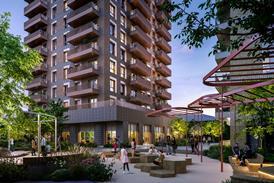Andrew Mellor provides another essential update on the constantly evolving regulatory environment

Last week the HSE published guidance in relation to Mandatory Occurrence Reporting (MOR). MOR only relates to Higher Risk Buildings (HRB) and applies to design and construction projects as well as occupied buildings. It is the process for reporting incidents or the risk that an incident may occur, as a result of a structural failure or spread of fire.
These incidents or potential incidents are called Safety Occurrences and they must have caused or be likely to cause a significant number of fatalities or serious injuries. So, in reality we are very likely considering partial or full collapse of a building or structure and fire spread between multiple compartments in a building.
The Principal Designer and Principal Contractor (both Building Regulations role) must establish and operate a MOR reporting system on a HRB project. The system must allow the design team and all of those visiting the construction site to report Safety Occurrences into the project MOR system.
Of course, this means that all those associated with the design and construction work have to be made familiar with the MOR system and what a Safety Occurrence is. The guidance states what a Safety Occurrence might be and this includes defective building work, non-compliant products, incorrectly installed products, product failure, fire safety issues and a design defect caused by either calculation software or human error.
The HRB procedures regulations states that a Principal Designer (Building Regulations) must ensure an appropriate frequency of inspections of HRB design work for safety occurrences throughout the construction phase. During the development of the legislation it was considered that the Principal Designer would have to go the construction site to undertake inspections, but the wording of the published legislation in respect of this matter is unclear.
Certainly, many of those planning to provide the Principal Designer service are not envisaging having to attend site to discharge the legal duties. The word ‘inspect’ is not one designers are used to, for them a ‘review’ of design work would be more the norm. If we consider the likely design defects that would lead to a Safety Occurrence, it is very unlikely that the Principal Designer will be able to establish through inspection of the design that, for example, a structural element has been undersized, although they could be advised so by a third party and therefore be obligated to report it.
Early engagement on the MOR system is vital for the Principal Dutyholders on every project
A more likely situation is that it becomes apparent that the performance of a product which is critical for life safety is not what it was understood to be and therefore the Principal Designer must report it to the regulator. The formal reporting of a Safety Occurrence is very likely to also lead to the need to get approval for the rectification work, therefore a Change Application and the consequential delays to the construction work.
The MOR system is likely to be operated by the Principal Contractor but it would seem that the Principal Designer will need to have full access to that system to monitor whether any design related risks have been reported into the system, such that he or she can then notify and report as necessary to the regulator. Principal Designers should therefore get a thorough understanding of the MOR duties and the related guidance before starting an HRB project.
Safety Occurrences must be notified by the Principal Designer and Principal Contractor (both Building Regulations role) to the Building Safety Regulator as soon as possible. It appears to me that this should done within one working day. Furthermore, within 10 calendar days a report must be submitted to the regulator providing more detail on the issue and what has or is being done to mitigate the risk and resolve the situation.
The regulator will review the report and will then contact those that have submitted the report if any of the following apply: more information is required; that the issue did not need reporting or that a formal investigation needs to be undertaken by the regulator.
It is important to note that a report must be issued to the regulator even if the issue is remedied within the 10 day period before the report is due to be submitted. Failure to submit a report could lead to enforcement and possibly prosecution. The advice from the regulator is to protect yourself as the Principal Designer, obtain and save a copy of the submitted report if you are aware of the Safety Occurrence and know that the Principal Contractor has submitted the report.
The approach on all HRB projects surely should be that the Principal Contractor, Principal Designer and Client get to see all MOR notifications and reports. Early engagement on the MOR system is vital for the Principal Dutyholders on every project.
Postscript
Andrew Mellor leads the development consultancy team at PRP. The practice has been advising the Department for Levelling Up, Housing and Communities and conducting research around policy and building regulations.
















No comments yet